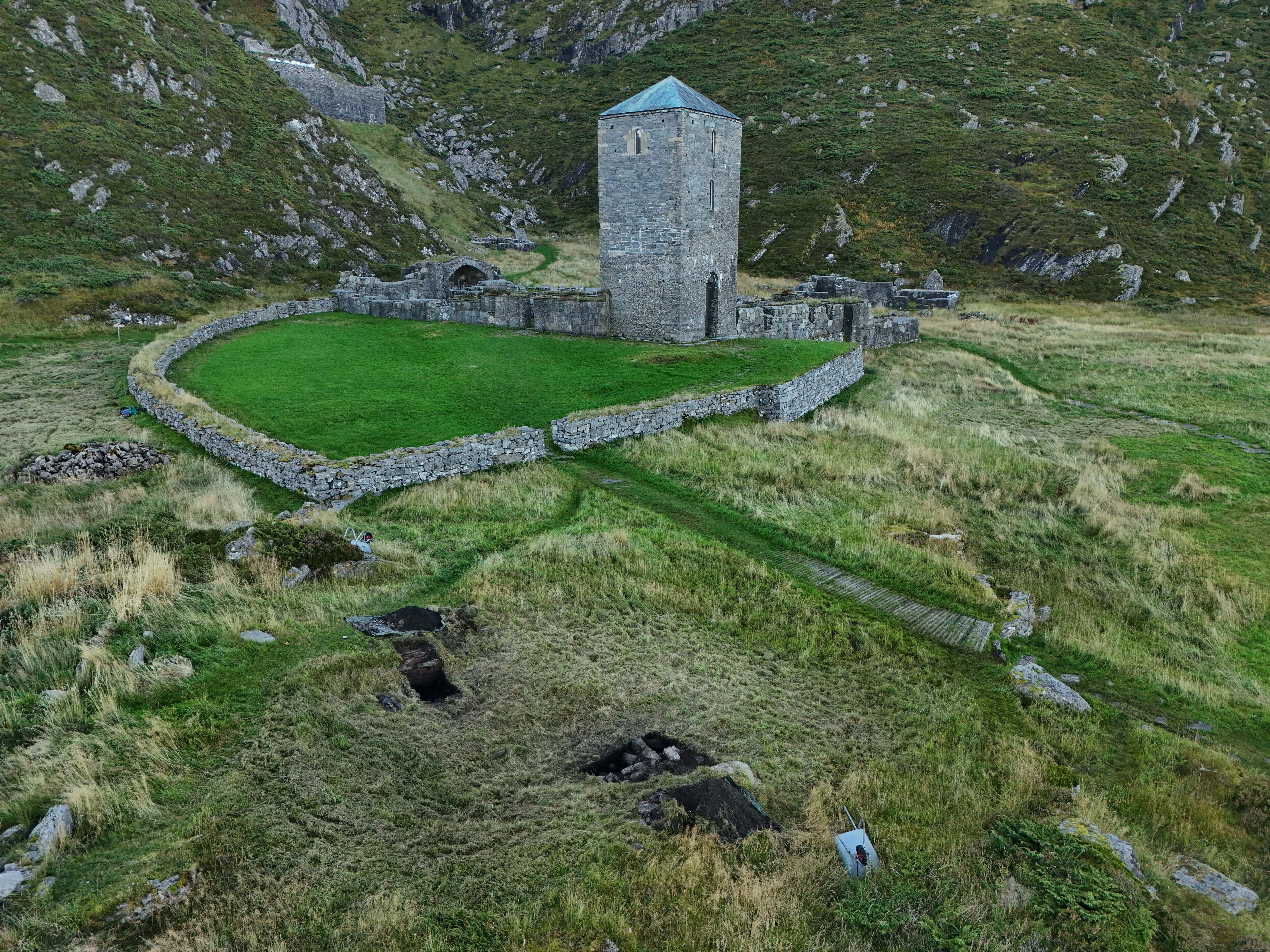
Unknown Medieval Ruin Discovered at Selja Monastery and Pilgrimage Site
An unknown medieval structure has emerged just meters from Selja Monastery. The find may shed new light on life and activity on the island during the monastic period.
Archaeologists Regin Meyer and Dag-Øyvind Engtrø Solem from NIKU are conducting a research excavation at the Selja monastery and pilgrimage site. After just two days in the field, they made a remarkable discovery: masonry and flagstone flooring from a stone building that has never been documented before.
Selja Monastery and Saint Complex
Location: Selja Island, Stad Municipality, Vestland County
Historical Significance: Norway’s oldest known saint cult – associated with the legend of St. Sunniva and the Selja Men
Origin of the Saint Cult: According to the saga, Sunniva and her followers were shipwrecked on Selja in the mid-10th century. They hid in a cave and died as martyrs.
Ecclesiastical Development:
- Olav Tryggvason is said to have discovered the saintly remains and built a church in 996
- Olav Haraldsson established the feast day Seljumannamesse in 1024
- Olav Kyrre founded Western Norway’s first bishopric on the island around 1068
Monastic Complex: The Benedictine monastery was gradually expanded throughout the 12th and 13th centuries
Sunniva Church: The ruins contain traces of an older stone church with Anglo-Saxon features
“This is a ruin we haven’t seen before, and it’s located just 30 meters from the monastery. The construction suggests it dates to the High Middle Ages,” says Regin Meyer.
The High Middle Ages in Norway span from 1130 to 1350.
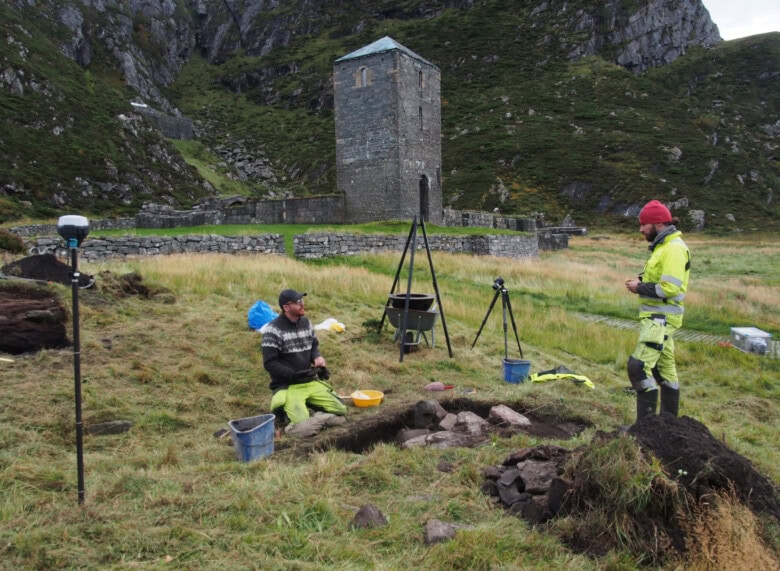
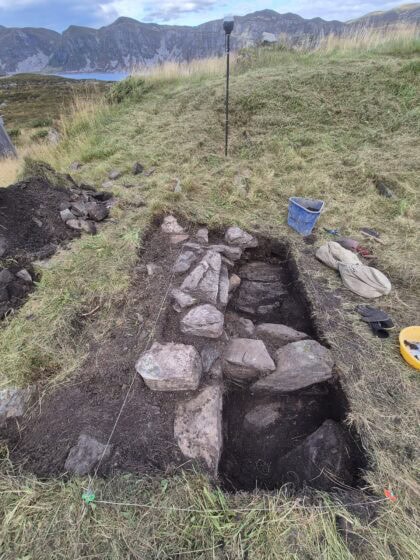
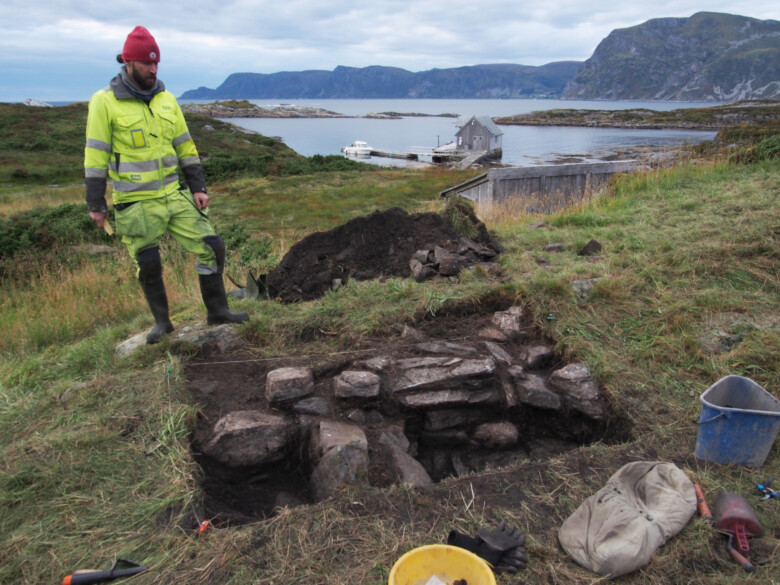
Meyer is a building archaeologist and knows the Selja monastery and pilgrimage site intimately. Last year, he identified remains of an Anglo-Saxon stone church within the ruins of St. Sunniva’s Church – possibly one of Norway’s very first stone buildings.
You can read the research article about that exciting discovery here (Norwegian).
Ground-Penetrating Radar Revealed Hidden Structures
The current excavation is based on ground-penetrating radar surveys conducted by NIKU in 2021 and 2022.
These gave signals interpreted as possible archaeological structures beneath the surface. These are now being investigated through trenches north and west of the monastery.
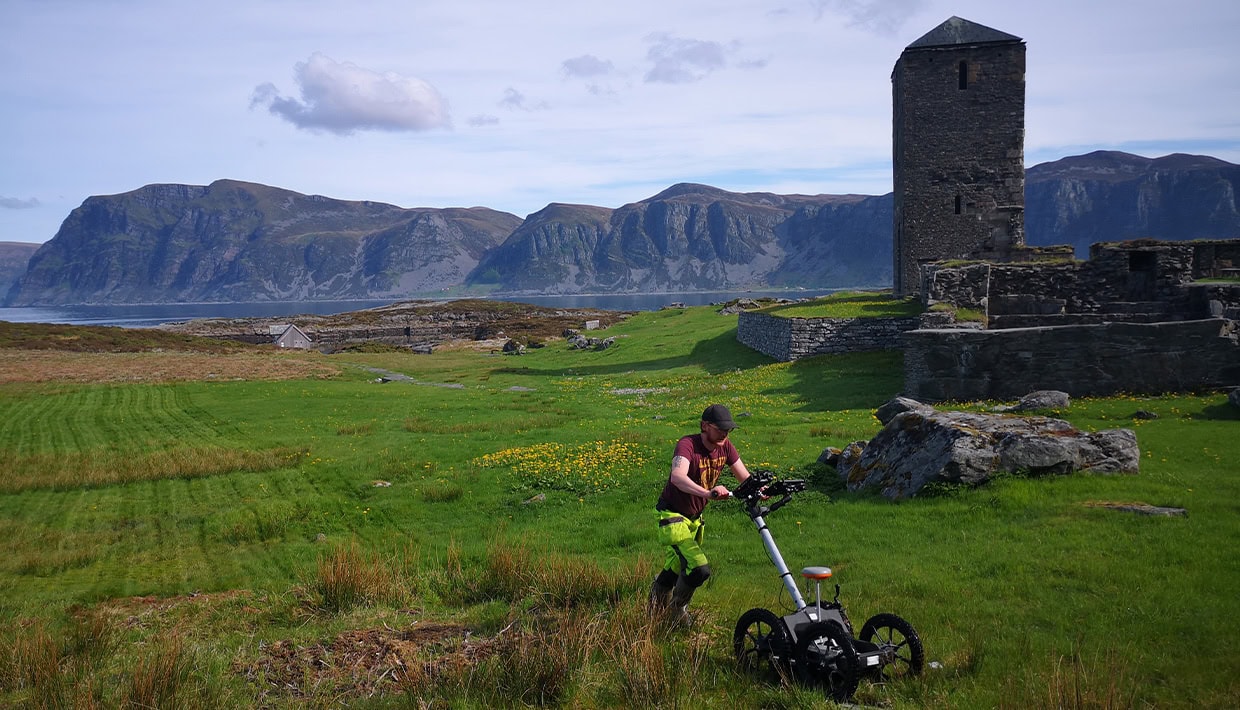
The goal is to identify the building’s construction method, collect samples for dating, and understand its function.
“So far, we’ve uncovered two rooms, but the building continues beneath the turf. Our hypothesis is that it may have been a production or craft-related structure connected to the monastery’s daily operations,” says Meyer.
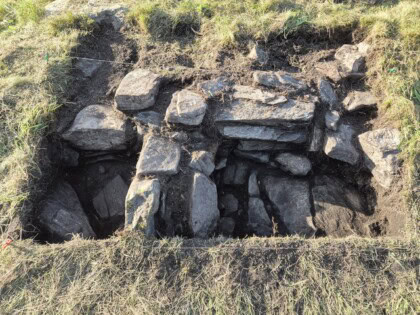
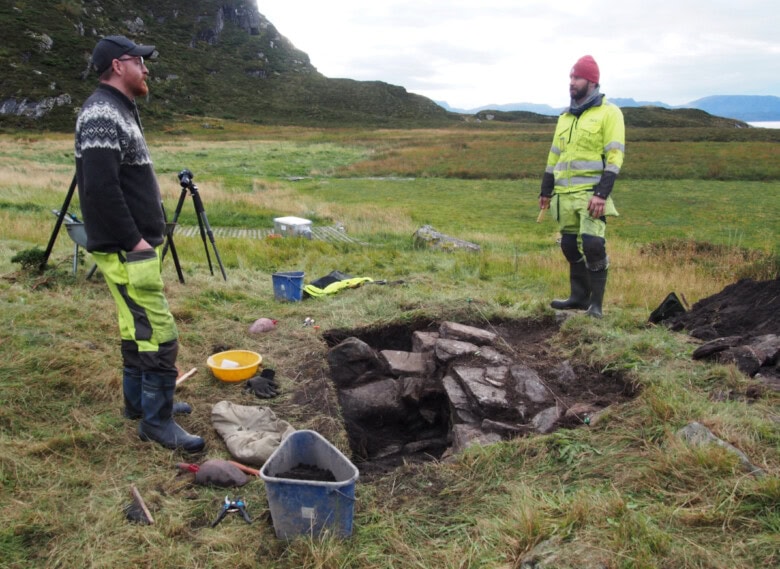
Selja – An Archaeological Treasure Trove
Selja has been the subject of archaeological investigations for over 200 years, and ruins from the monastery, bishop’s seat, and pilgrimage site are well documented. But this new find shows that the island still holds untold stories.
“This discovery provides an important new contribution to Selja’s history and highlights the island’s continued research potential.”
More Discoveries May Follow
The excavation will continue in the coming days, and the archaeologists hope to uncover more traces – both from the medieval period and even earlier times.
NIKU has previously collaborated with Stad Municipality on the preservation and dissemination of Selja’s medieval ruins, and this work continues with new perspectives following the latest discovery.

